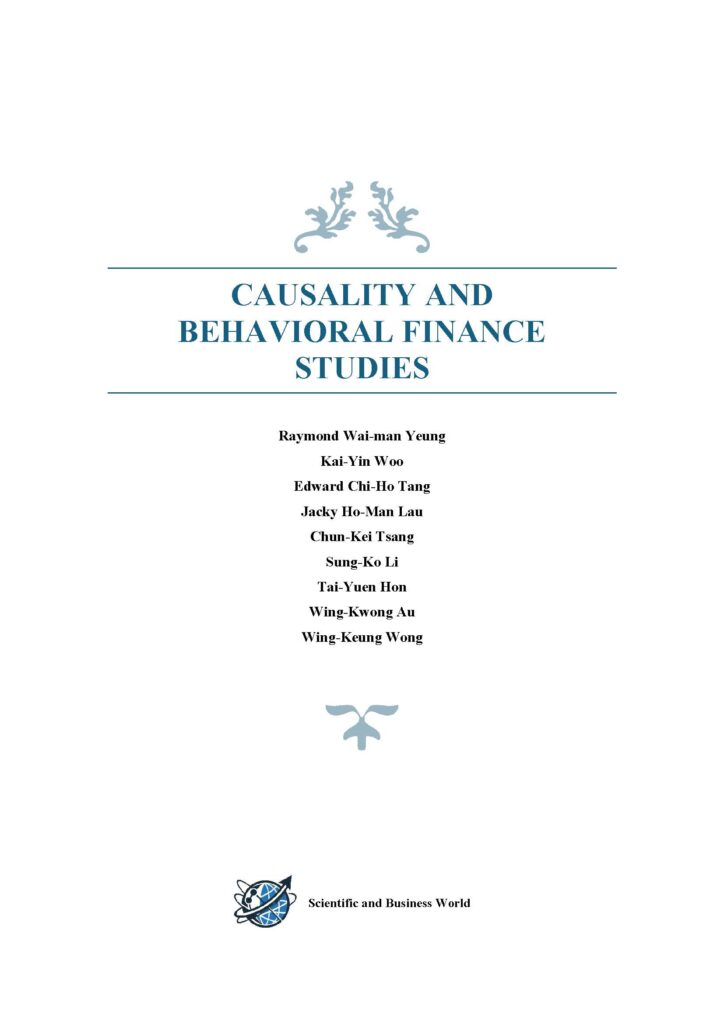
Authors:
Raymond Wai-man Yeung
Kai-Yin Woo
Edward Chi-Ho Tang
Jacky Ho-Man Lau
Chun-Kei Tsang
Sung-Ko Li
Tai-Yuen Hon
Wing-Kwong Au
Wing-Keung Wong
Publication Date: 2025 April/First Edition
Language: English
Format: PDF
Pages: 127
File Size: 2.51 MB
eISBN:
Contents
Chapter 1
Causality Relationship between Money, Income, Price, and Exchange Rates in a Small Open Economy
Abstract
- Introduction
- Framework
- Data
- Results
- Conclusions
Chapter 2
The Effect of Global Oil Price and Macroeconomic Variables on the stock market returns for ASEAN Countries
Abstract
- Introduction
- Literature Review
- Methodology
3.1 Unit Root Test
3.2 Vector Autoregressive model
3.3 Robustness Check - Data and Variable Descriptions
- Empirical Results
5.1 VAR model
5.2 Robustness Check Model - Conclusions
Chapter 3
Is it Worthwhile to Study Competitiveness Indices? Evidence from the Causal Relationship between Global Competitiveness Index and Economic Growth Rate
Abstract
- Introduction
- Empirical design and Hypotheses
- Data
- Method
- Results
5.1 Initial estimations
5.2 Estimations on developing and developed countries
5.3 Estimations on sub-indices
5.4 Searching Investment Opportunities through Data Envelopment Analysis on Competitiveness
5.5 The mechanism of transforming resources into competitiveness
5.6 Data envelopment analysis for competitiveness index
5.7 The competitiveness map
5.8 Robustness check - Conclusions
Chapter 4
Structural Time Series Analysis of Data from Interwar European Hyperinflations of Germany, Hungary and Poland
Abstract
- Introduction
- Statistical Specifications of Structural Time Series Model
- Data Description and Structural Time Series Analysis of Data
3.1 Germany
3.2 Hungary
3.3 Poland - Conclusions
Chapter 5
Review of The Theories of Behavioral Finance and Behavioral Economics, Financial Econometrics, and Applications
Abstract
- Introduction
- Theoretical Models
2.1 Utility
2.1.1 Risk aversion and Risk seeking
2.1.2 (Reverse) S-shaped utility functions
2.1.3 Skewness seeking
2.1.4 Regret-aversion
2.1.5 Multivariate utility functions
2.2 Market Efficiency
2.3 Stochastic Dominance
2.3.1 Stochastic dominance (SD) for risk averters and risk seekers
2.3.2 Stochastic dominance (SD) for investors with (reverse) S-shaped
utility functions
2.3.3 Almost Stochastic Dominance
2.3.4 Indifference Curves
2.4 Risk Measures
2.4.1 Selection rules
2.4.2 Sharpe Ratio
2.4.3 Omega ratio
2.5 Two-Moment Decision Model
2.6 Mean-Variance (MV) Portfolio Optimization
2.7 Diversification Behaviors
2.8 Behavioral models for Overreaction and Underreaction - Econometric Methods
3.1 Stochastic Dominance (SD) Tests
3.2 Estimation of Mean-variance (MV) Portfolio Optimization
3.3 Tests for Risk Measures
3.4 causality and nonlinearity
3.5 Spurious Models
3.6 Test for investors’ Behavioral Models - Applications
4.1 Stochastic Dominance
4.2 Portfolio Optimization
4.3 Risk Measures
4.4 causality and nonlinearity nderreaction and overreaction
4.5 Spurious Models
4.6 Herding Effect - Conclusions